
How to Use MQ-5 : Examples, Pinouts, and Specs
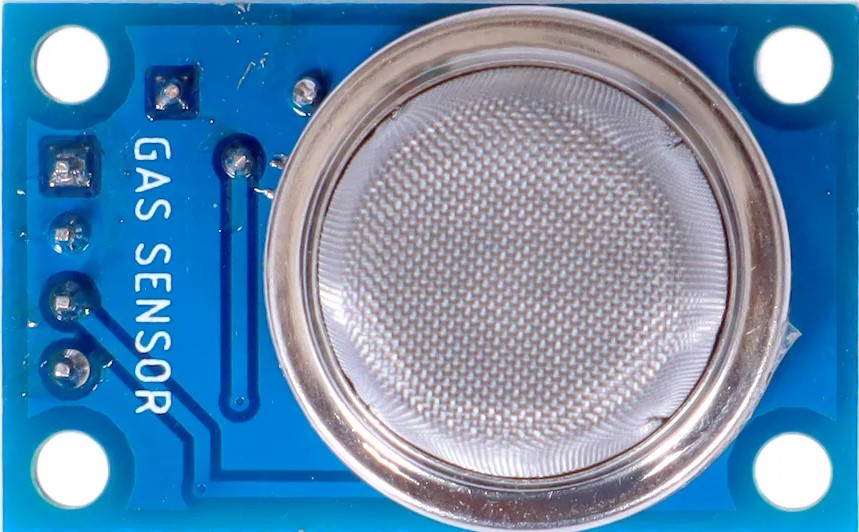
 Design with MQ-5 in Cirkit Designer
Design with MQ-5 in Cirkit DesignerIntroduction
The MQ-5 gas sensor module, manufactured by Tengxing, is a widely used sensor that detects the presence of various gases such as LPG (liquefied petroleum gas), natural gas, and coal gas. It is commonly utilized in gas leakage detecting equipment for homes and industries. Its high sensitivity and fast response time make it an ideal component for safety systems in gas-powered appliances and monitoring devices.
Explore Projects Built with MQ-5
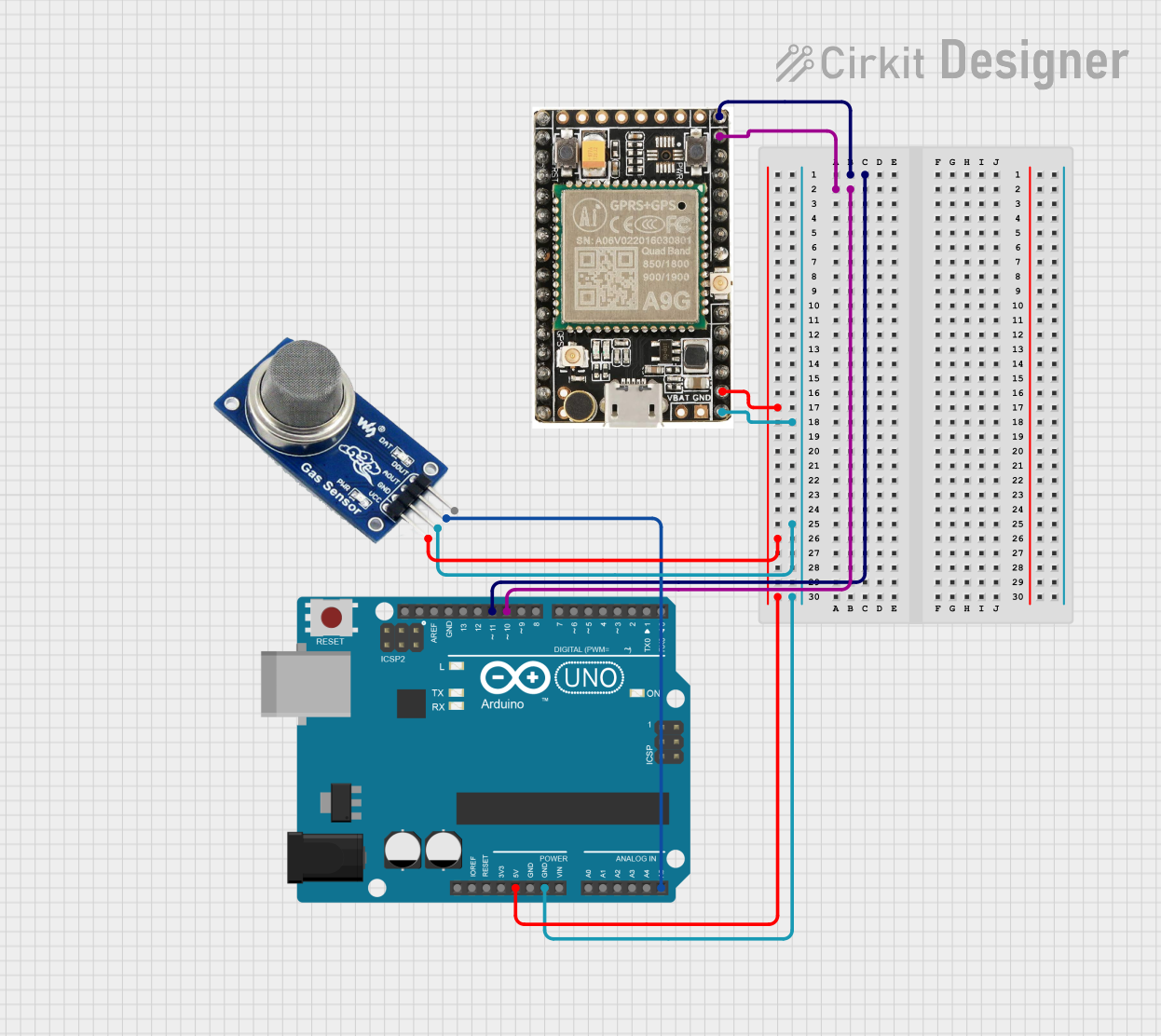
 Open Project in Cirkit Designer
Open Project in Cirkit Designer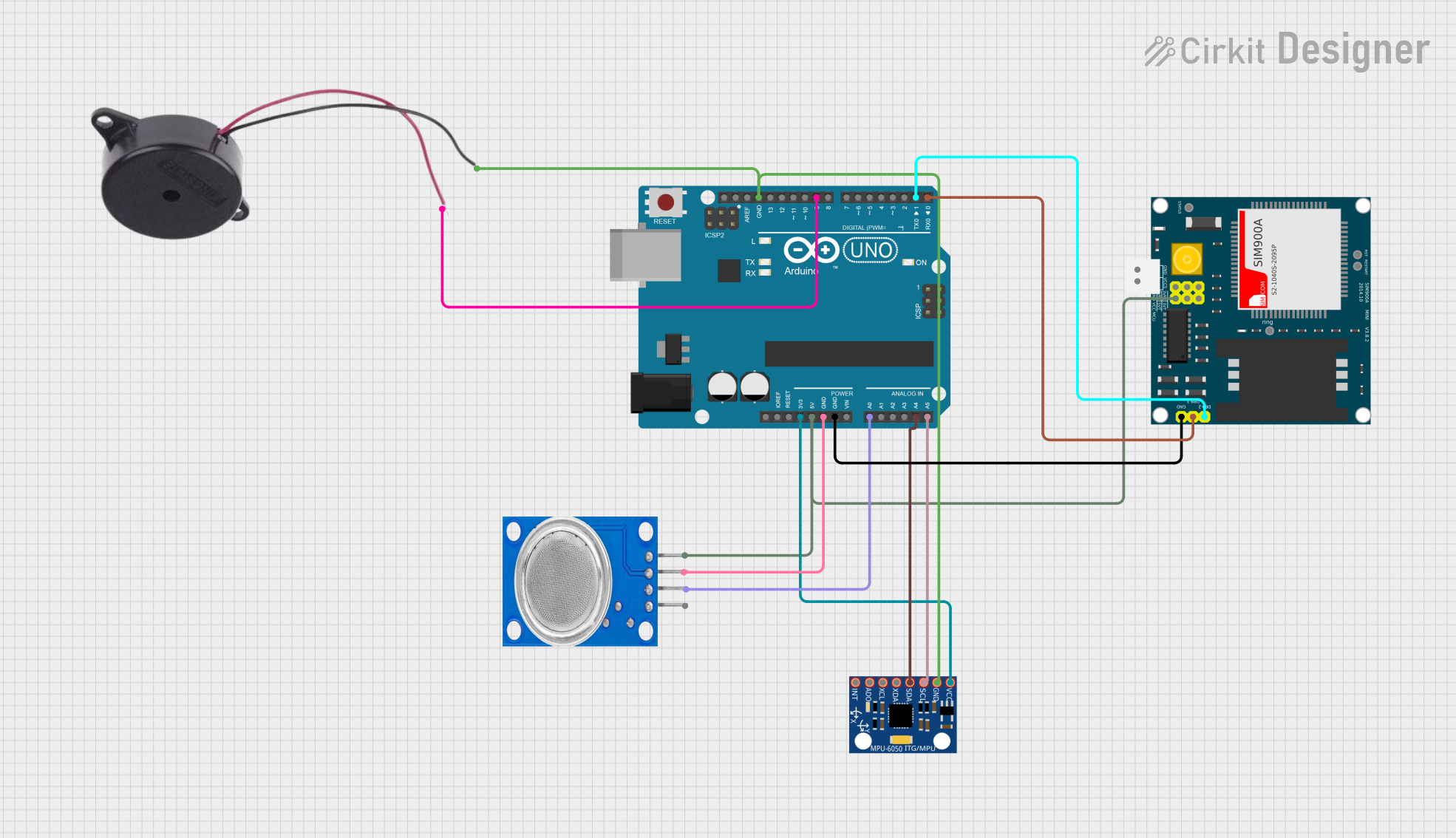
 Open Project in Cirkit Designer
Open Project in Cirkit Designer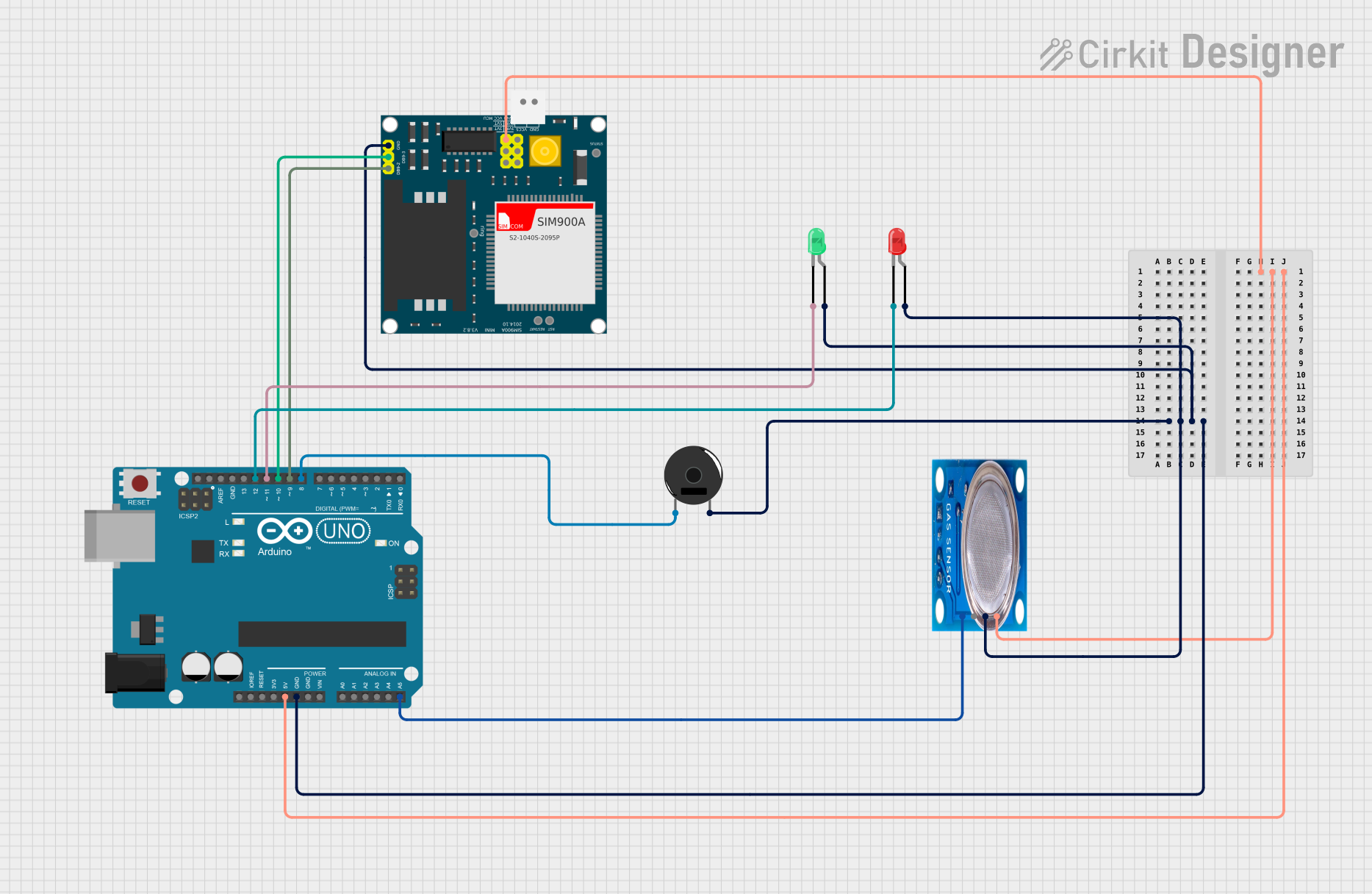
 Open Project in Cirkit Designer
Open Project in Cirkit Designer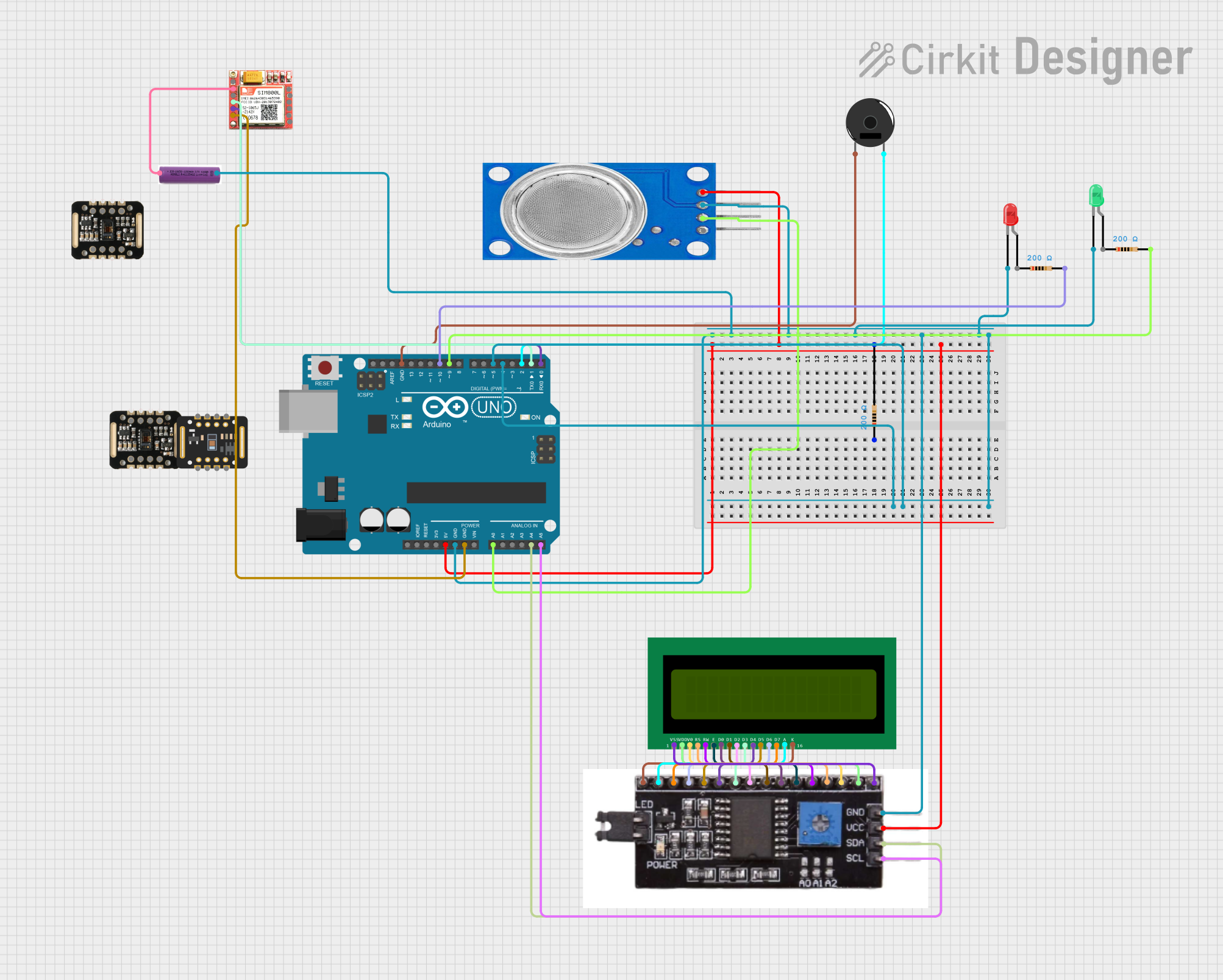
 Open Project in Cirkit Designer
Open Project in Cirkit DesignerExplore Projects Built with MQ-5

 Open Project in Cirkit Designer
Open Project in Cirkit Designer
 Open Project in Cirkit Designer
Open Project in Cirkit Designer
 Open Project in Cirkit Designer
Open Project in Cirkit Designer
 Open Project in Cirkit Designer
Open Project in Cirkit DesignerCommon Applications and Use Cases
- Domestic gas leakage detectors
- Industrial gas detectors
- Portable gas detectors
- Gas leak alarm systems
- Air quality monitoring
Technical Specifications
Key Technical Details
- Sensor Type: Semiconductor
- Detection Gases: LPG, natural gas, coal gas
- Concentration Range: 300 to 10000 ppm
- Preheat Duration: 20 seconds
- Supply Voltage: 5V DC
- Output Voltage: 0.1-0.3V (idle), up to 5V (detection)
- Operating Temperature: -10°C to 50°C
- Heater Power Consumption: Approx. 800mW
Pin Configuration and Descriptions
| Pin Number | Pin Name | Description |
|---|---|---|
| 1 | VCC | Power supply (5V DC) |
| 2 | GND | Ground |
| 3 | DOUT | Digital output (TTL logic level) |
| 4 | AOUT | Analog output (variable voltage) |
Usage Instructions
How to Use the Component in a Circuit
- Power Supply: Connect the VCC pin to a 5V power supply and the GND pin to the ground.
- Signal Output: The MQ-5 module provides two outputs:
- Digital Output (DOUT): Connect to a digital input pin on a microcontroller. The digital output goes high when the gas concentration exceeds a certain threshold.
- Analog Output (AOUT): Connect to an analog input pin for reading the gas concentration levels. The voltage level on this pin varies proportionally with the gas concentration.
Important Considerations and Best Practices
- Ensure the module is preheated for at least 20 seconds before taking accurate readings.
- Avoid exposure to high concentrations of gas for long periods, as it may affect the sensor's longevity.
- Calibrate the sensor for the specific gas you intend to detect.
- Implement proper ventilation when testing the sensor to prevent accumulation of gases.
Example Arduino UNO Code
// MQ-5 Gas Sensor with Arduino UNO
int analogPin = A0; // Analog output of the MQ-5 sensor connected to A0
int digitalPin = 2; // Digital output of the MQ-5 sensor connected to pin 2
int analogValue = 0; // Variable to store the analog value
int digitalValue = 0; // Variable to store the digital value
void setup() {
Serial.begin(9600); // Start serial communication at 9600 baud rate
pinMode(digitalPin, INPUT); // Set the digital pin as input
}
void loop() {
analogValue = analogRead(analogPin); // Read the analog value from sensor
digitalValue = digitalRead(digitalPin); // Read the digital value from sensor
// Print the values to the serial monitor
Serial.print("Analog Value: ");
Serial.print(analogValue);
Serial.print(" | Digital Value: ");
Serial.println(digitalValue);
delay(1000); // Wait for 1 second before the next loop
}
Troubleshooting and FAQs
Common Issues Users Might Face
- Inconsistent Readings: Ensure the sensor is properly preheated and calibrated for the target gas.
- No Response to Gas: Check the power supply and wiring connections. Ensure the sensor is not damaged.
- High Background Noise: Use shielded cables and keep the sensor away from sources of electromagnetic interference.
Solutions and Tips for Troubleshooting
- Calibration: Perform calibration in a controlled environment with a known concentration of the target gas.
- Sensor Replacement: If the sensor has been exposed to high gas concentrations for an extended period, consider replacing it.
- Environmental Factors: Be aware of ambient conditions such as humidity and temperature that can affect sensor performance.
FAQs
Q: How often should the MQ-5 sensor be calibrated? A: Calibration frequency depends on the usage and environment. It is recommended to calibrate the sensor before initial use and periodically thereafter.
Q: Can the MQ-5 sensor detect smoke? A: The MQ-5 is designed for gas detection and may not be suitable for smoke detection. For smoke, consider using a dedicated smoke sensor.
Q: What is the lifespan of the MQ-5 sensor? A: With proper usage and maintenance, the MQ-5 sensor can last for several years. However, exposure to high concentrations of gas can reduce its lifespan.